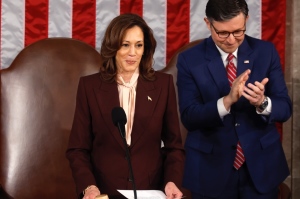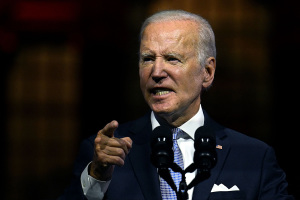Donations to 'religion' declined $2 billion in 2018 after years of growth: study

Giving to houses of worship, denominational bodies and religious television and radio declined in 2018 after years of growth as individual Americans donated about $2 billion less than they did in 2017 under a new federal tax code, according to a new study.
The Giving USA Foundation, an arm of the Giving Institute, released its 2019 annual report on philanthropy in the U.S. conducted by the Indiana University Lilly Family School of Philanthropy on Tuesday.
The study is the longest-running and most comprehensive report on charitable giving in the United States.
It finds that total overall charitable giving in the country rose 0.7 percent to an even higher record level of nearly $428 billion actual dollars in 2018. But when inflation is accounted for, the study finds that total giving in 2018 declined by 1.7 percent from a record level in 2017.
Although corporate giving increased by 5.4 percent in 2018, the study shows that individual giving declined by 1.1 percent in the first year under the new Tax Cuts and Jobs Act of 2017.
The study finds a 3.4 percent decline in individual giving in 2018 when inflation is accounted for. This represented the greatest decline in individual giving since the recession of 2008 and 2009.
As for giving to "religion" — which the study defines as donations made to houses of worship, denominational bodies and religious radio and television — giving to those groups dropped by 1.5 percent to $124.52 billion in current dollars for 2018. That is nearly $2 billion less than the $126.47 billion given to religion in 2017.
When adjusted for inflation, the study indicates that giving to religion dropped 3.9 percent in 2018. Leading up to 2018, giving to religion saw a steady growth of 2 percent or more in each of the last seven years.
The findings come as some have voiced concern that the Trump tax cuts, or Tax Cuts and Jobs Act, would lead to a reduction in the number of people making charitable donations due to the doubling of the standard deduction.
According to Giving USA, numerous studies have suggested that the number of households itemizing their deductions would drop to about 16 to 20 million in 2018, down from 45 million households in 2016. Giving USA noted that the shift came in response to the federal tax policy change that doubled the standard deduction.
"About half of all Americans give, and the tax policy changes may have created uncertainty for some donors, especially those who previously itemized but no longer will,” Una Osili, associate dean for research and international programs at the Lilly Family School of Philanthropy, said in a statement. “We have strong historical data about the link between economic variables, the stock market and charitable giving, and we will be analyzing data for the next few years to better understand how broad giving patterns may have changed.”
Giving USA Chair Rick Dunham, the CEO of Dunham + Company, told The Christian Post that there has been a "bit of a depression in giving to religion."
“I do think there are some negative things happening within the religious community that could affect giving, such as a denominational splits we are seeing, the problems within the Catholic church," Dunham said. "There are a number of things that could definitely be forces that are driving down giving.”
Despite the decline, giving to religion remains the category that receives the “biggest piece of the pie” when it comes to the overall charitable giving. However, religion’s share declined in 2018.
In 2018, giving to religion represented about 29 percent of the overall charitable giving.
“For the last couple of years, religion has been holding steady at around 31 percent of overall giving,” Dunham explained. “But it has been in a general gradual decline as the percentage of the whole. Giving to religion has actually been increasing every year but it has just been a lower percentage of the overall pie.”
“Studies have shown that church attendance is down, especially among mainline denominations,” he added. “I think it is reasonable to say that there is at least a correlation that the reduced church attendance would have on giving to religion.”
While giving to things like religion, education and public society benefit organizations decreased in 2018, giving to international affairs organizations increased by 9.6 percent and giving for the environment and animal organizations increased by 3.6 percent.
Dunham cautioned that the amount given to religion could be even greater than what the study indicates if charities and parachurch organizations were grouped in with the religion category.
“This [study] is set up [based] on the National Taxonomy of Exempt Entities. What that means is [groups like] World Vision, for instance, would end up in international affairs instead of religion,” he said. “Groups like the Salvation Army, although it is a church, it shows up under human services.”
“That was set up in the 1960s. With the codes, there is no desire to change that,” he continued. “That is why we are doing a little bit more work on looking at faith-based organizations that could be in health or education.”
Dunham stated that next year’s study will have a revised methodology on giving to religion.
“We began work on this a couple of years ago to update the methodology. I am anxious to see what comes out with that,” he said.
Dunham doesn’t think there was too much cause for concern in the data for churches and pastors. He said there are many independent and larger churches that are growing today and increasing their revenues.
He noted, however, that it is increasingly important for churches to have the capability to offer their churchgoers a way to give online and on their cellphone.
“As far as a pastor is concerned, it is the importance of continual teaching on the importance of giving and why that is important as a spiritual exercise,” Dunham stressed.
While much attention in the media has been paid to the decline in total giving in the U.S. when adjusted for inflation and the impact that the new Tax Cuts and Jobs Act could have played in the decline of individual charitable giving in 2018, Dunham believes that it is too early to conclusively say what kind of impact the new legislation may be having
“That is one of the things we are really going to be studying carefully over the next 12 months to better understand the actual impact of the tax reform,” he explained, adding that there is an effort on Capitol Hill to alleviate damage the legislation may be having on charitable giving.
Dunham added that the decline in the stock market late last year may have kept some people from making year-end donations. Additionally, he pointed out that 2017 was a historic year for the stock market.
“I personally believe that 2019, unless something goes awry and the stock market drops, if the economy continues to grow as it is and the stock market continues to climb over the year, then I would expect 2019 to be a strong year,” Dunham predicted.
Follow Samuel Smith on Twitter: @IamSamSmith
or Facebook: SamuelSmithCP





























